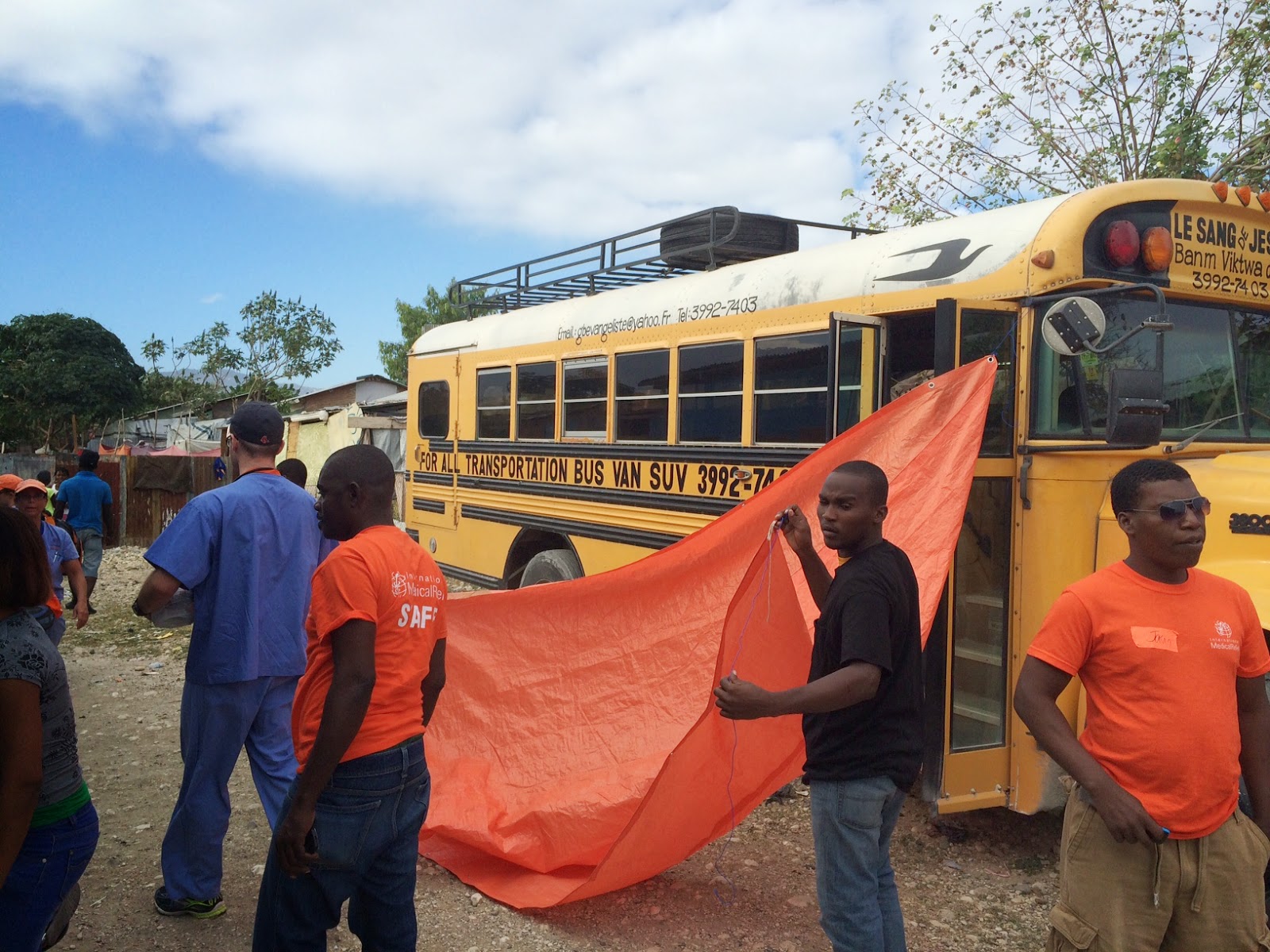It's Day 4 of the Haiti Medical Mission Trip with International Medical Relief and today we were at a community that looked a bit like an enclosed compound. We drove through a high gate and into a walled in area where about a dozen structures were set up. Some of them were metal silos with a bunch of bunk beds inside and others were made out of concrete cinder blocks with crushed stones for a floor and nothing else inside.
Many of our patients came in with the same symptoms we had seen at the other locations: UTIs, STDs, dehydration and worms. But there were some interesting cases. We saw a woman who had cataracts in both eyes and was so anemic her teeth were bleeding. She looked like she was an older woman (like in her 60s) so we were surprised to learn she was only 40. Unlike in the U.S., getting surgery to remove it from a person’s eyes is rare in Haiti.
We set up the pharmacy in one of the metal silos, while triage and community education shared one of the cinder block homes. Well- and sick-care were set up under a tarp outside. At 7:30 in the morning it was already hot, so we needed the shade we could get.
Many of our patients came in with the same symptoms we had seen at the other locations: UTIs, STDs, dehydration and worms. But there were some interesting cases. We saw a woman who had cataracts in both eyes and was so anemic her teeth were bleeding. She looked like she was an older woman (like in her 60s) so we were surprised to learn she was only 40. Unlike in the U.S., getting surgery to remove it from a person’s eyes is rare in Haiti.
“It’s sad. She’s so young and already the cataracts has made her nearly blind,” said med student Caitlin.
We are always learning something new on this trip -- even those who have been in the medical field for a while. Nurse Patti took the lead on what we called our mini clinic. Our location was by an orphanage. We had 56 children and adults come over that needed treatment. She sat them all down in a room and with the help of two other mission volunteers, they treated them all and made sure they all got worm pills.
But with the good times, there are always those moments that bring us back to reality and the importance being there. Nurse Amy had a infant who came in with its aunt. The poor baby was so dehydrated, the soft spot around its head was sunken in.
But with the good times, there are always those moments that bring us back to reality and the importance being there. Nurse Amy had a infant who came in with its aunt. The poor baby was so dehydrated, the soft spot around its head was sunken in.
“It was crying and was so hungry, yet there were no tears,” said Amy. “We started giving it some water and now it has tears. Its also so much more happy and content.”
Another first was this six-year-old girl who came in complaining about ear pain. We took a look inside her ear and saw she had a fly in there. Judging by the amount of wax that had built up around it, the fly had been in there for a while.
“At first we tried to get it out with a tool, but it was too deep. We had to use a syringe,” said nursing student Mackie. “The girl was so scared. She was flailing and trying to get away from us, but eventually we were able to calm her AND get the fly out.”
We set a new record that day by seeing 329 patients plus the 56 from the orphanage. Already, we are beginning to run out of medications to treat many of the fungal infections and other common issues the people had. We also ran out of Tums. We can’t believe how many we have given out, so if you ever come to Haiti on a mission, bring Tums. Lots and lots of Tums.
Related posts:
Haiti Day 1: Start of Medical Mission Trip
Haiti Day 2: Transforming a school to a medical clinic
Haiti Day 3: Venturing out to help in rural areas
Haiti Day 4: Sweating it out on New Year's Eve on a Mission Trip
Haiti Day 5: Final day of the International Medical Relief mission
Haiti: The boy with the foot
We set a new record that day by seeing 329 patients plus the 56 from the orphanage. Already, we are beginning to run out of medications to treat many of the fungal infections and other common issues the people had. We also ran out of Tums. We can’t believe how many we have given out, so if you ever come to Haiti on a mission, bring Tums. Lots and lots of Tums.
Related posts:
Haiti Day 1: Start of Medical Mission Trip
Haiti Day 2: Transforming a school to a medical clinic
Haiti Day 3: Venturing out to help in rural areas
Haiti Day 4: Sweating it out on New Year's Eve on a Mission Trip
Haiti Day 5: Final day of the International Medical Relief mission
Haiti: The boy with the foot
































